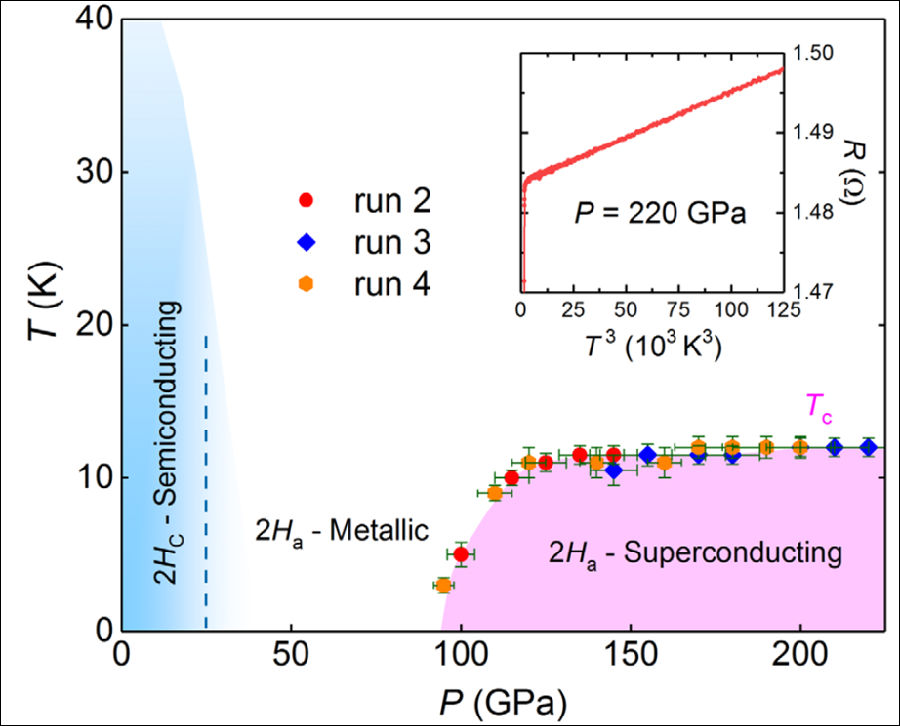Pressure induced superconductivity in MoS2 – Dr. Jinglong Zhu
JANUARY 31, 2018
Superconductivity is a physical state occurring in certain materials, called superconductors, in which electrical resistance disappears completely when cooled below a characteristic critical temperature. This phenomenon can be induced under chemical and high external pressure conditions. New work from a team including Dr. Jinglong Zhu of HPSTAR found superconducting MoS2 under extreme pressure conditions. This work is published by Physical Review Letters.
Molybdenum disulfide is a unique member of binary compounds known as transition metal dichalcogenides (TMDs). Any newly discovered superconducting ability in this class of materials is of great interest to scientists and engineers.
“In 2014, we discovered semiconductor MoS2 become metallization under high pressure conditions”, said Dr. Chi, the lead author. “So in this work, we are extending pressure beyond megabars to seek possible superconductivity in MoS2, in other words, this study is a follow-up of the work in 2014”.

"Pressure can modify the crystal structure along with electronic structure of materials in a clean and controllable manner, which can induce superconductivity in matter that wouldn't at ambient conditions”, said Dr. Jinglong Zhu.
The team conducted high-pressure/low-temperature experiments. They squeezed molybdenum disulfide using a diamond anvil cell (DAC) up to Mbar pressures while cooling the samples using helium to measure the transport properties of the sample.
Molybdenum disulfide became superconductivity at 90 gigapascals. Upon further increasing the pressure, the critical temperature is rapidly enhanced beyond and stabilized over a wide pressure range up to 220 gigapascals.
“We used in-situ synchrotron-x-ray diffraction to track possible atomic structural changes during superconducting in MoS2”, said Dr. Jinglong Zhu who made the diffraction measurements. “While we didn’t observe any structural variation up to 155 gigapascals”, which suggests the superconducting emerged in MoS2 is intrinsic.
“Our finding represents an alternative strategy to achieve superconductivity in molybdenum disulfide in addition to chemical intercalation and electrostatic gating”, stated in the paper.
Caption: Pressure-temperature (P-T) phase diagram of 2H-MoS2.
压力通过改变原子间距,进而改变物质晶体结构及电子结构。相对于其他调控手段,压力是一种容易控制的而且不会引入杂质的纯净的调控上手段。近年来,研究人员在很多材料中用高压的方法诱导出很多奇特的物理现象,比如晶体与非晶在高压下的转化,绝缘体与超导的转变等等。北京高压科学研究中心的朱金龙研究员参与的新研究通过测量层状材料二硫化钼在高压低温下的输运性质发现二硫化钼在90 GPa(90万大气压)左右的压力条件下变成超导体。而在此超导转变中,原位X射线衍射表明并未有晶体结构的变化。
